Abstract
Recent studies demonstrated that epinephrine causes significant pulmonary A-V shunting. This study reports the effect of alpha and beta adrenergic blockade on this shunting. Sixty-three anesthetized mongrel dogs were ventilated with a mechanical respirator. Measurements of (1) the pulmonary shunt, (2) cardiac output, (3) mean pulmonary artery, pulmonary capillary wedge and systemic pressures, and (4) pulmonary and systemic vascular resistances were obtained at 5, 15 and 30 minute intervals during the first hour and hourly for 5 hours. Fifteen dogs received no treatment. All others received epinephrine hydrochloride, 2 mug/kg/min for 5 hours. Ten received epinephrine only. Ten were pretreated with propranolol hydrochloride, 250 mug/kg, 12 with phenoxybenzamine, 1 mg/kg, and 16 with phenoxybenzamine and propranolol. Propranolol significantly decreased the epinephrine induced pulmonary shunt at all times and was the most effective drug. Phenoxybenzamine decreased the early shunting, but less than propranolol, and did not decrease the late shunting. Blockade with propranolol and phenoxybenzamine was less effective than propranolol alone. Based on the observed hemodynamic changes it was suggested that beta blockade is effective in reducing epinephrine induced pulmonary insufficiency by favorably altering the flow and distribution of pulmonary blood flow which in turn decreases epinephrine induced ventilation-perfusion inequalities and capillary hypertension both of which result in shunting. Conversely phenoxybenzamine has an unfavorable effect on the pulmonary flow. These studies support previous work in animals and man which showed that beta adrenergic stimulation is important in the pathogenesis of pulmonary insufficiency. Because the amounts of epinephrine used produce blood levels observed in critical illness, these studies add support to a relationship between the increased catecholamine stimulation of critical illness and the associated and often unexplained pulmonary insufficiency.
Full text
PDF
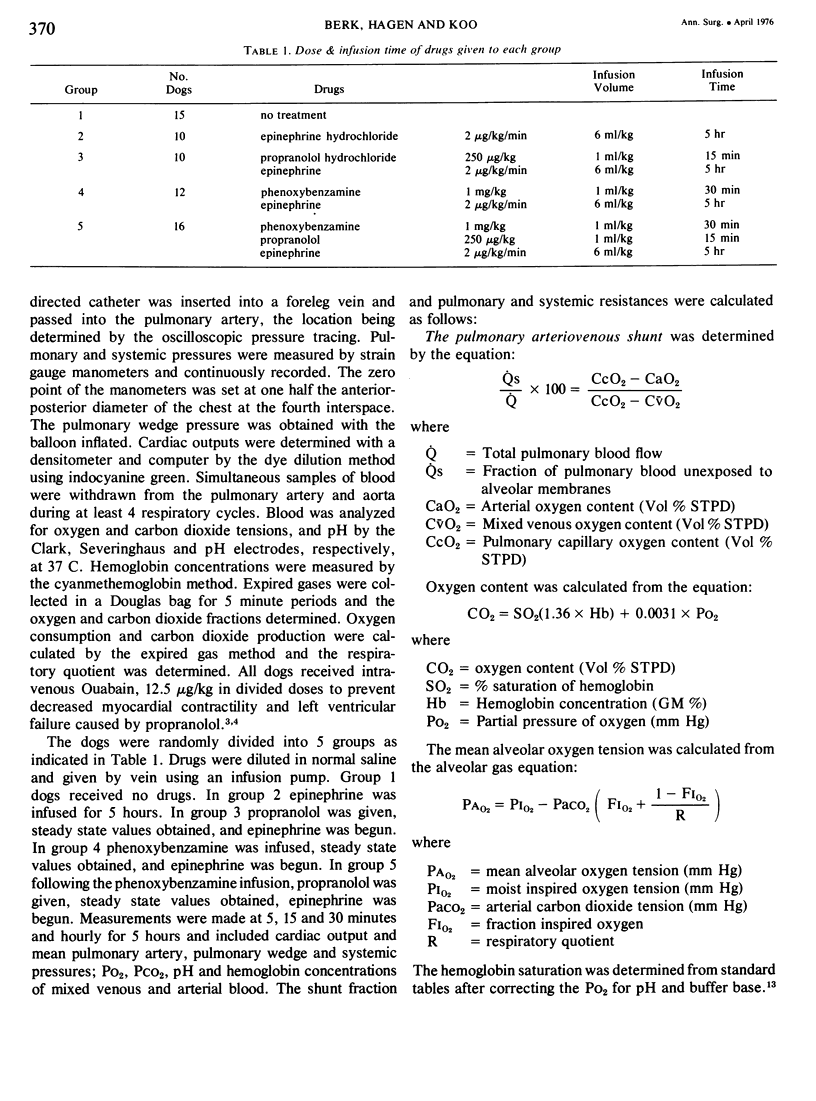
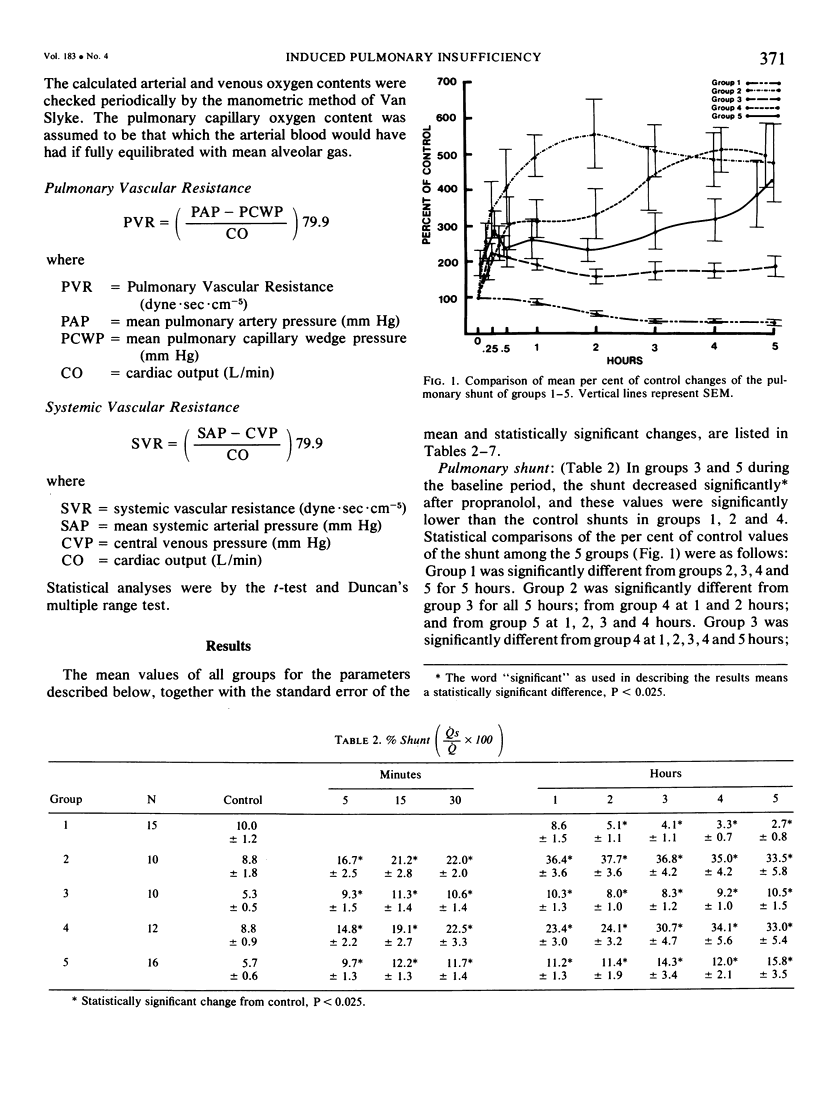
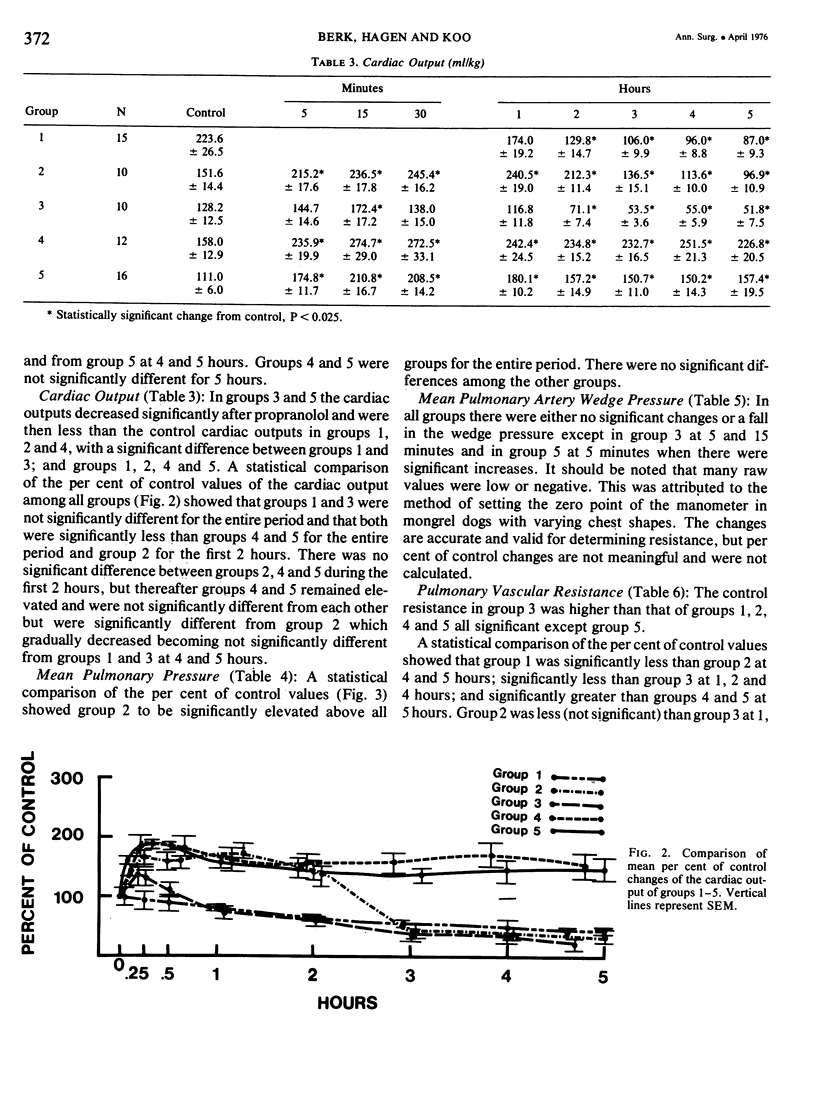
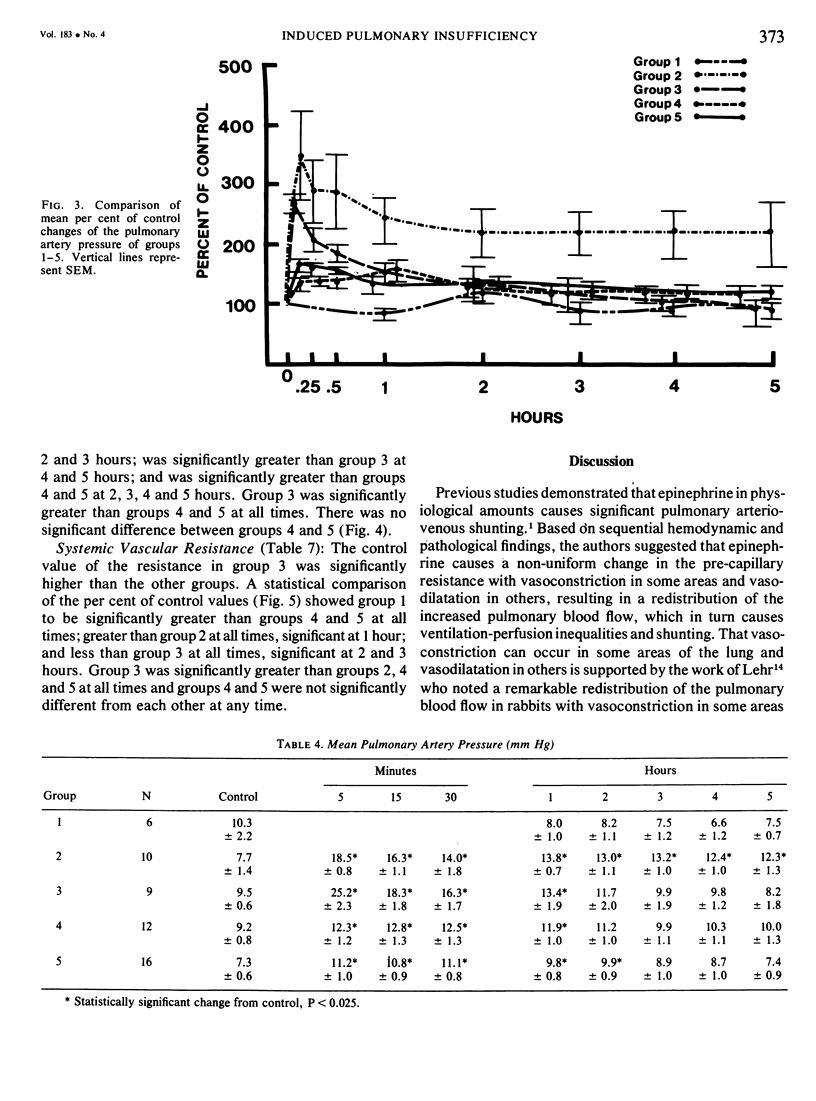

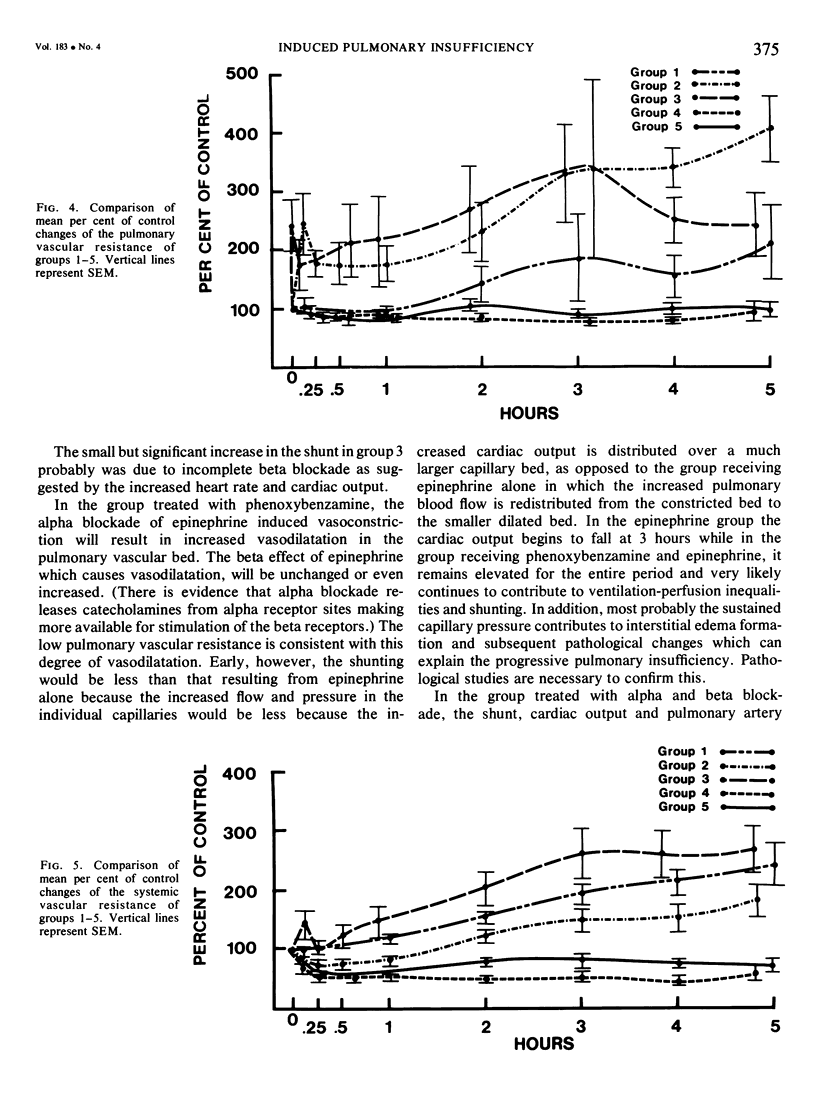

Selected References
These references are in PubMed. This may not be the complete list of references from this article.
- Berk J. L., Hagen J. F., Beyer W. H., Gerber M. J., Dochat G. R. The treatment of endotoxin shock by beta adrenergic blockade. Ann Surg. 1969 Jan;169(1):74–81. doi: 10.1097/00000658-196901000-00007. [DOI] [PMC free article] [PubMed] [Google Scholar]
- Berk J. L., Hagen J. F., Beyer W. H., Niazmand R. The effect of epinephrine on arteriovenous shunts in the pathogenesis of shock. Surg Gynecol Obstet. 1967 Feb;124(2):347–355. [PubMed] [Google Scholar]
- Berk J. L., Hagen J. F., Dunn J. M. The role of beta adrenergic blockade in the treatment of septic shock. Surg Gynecol Obstet. 1970 Jun;130(6):1025–1034. [PubMed] [Google Scholar]
- Berk J. L., Hagen J. F., Koo R., Beyer W., Dochat G. R., Rupright M., Nomoto S. Pulmonary insufficiency caused by epinephrine. Ann Surg. 1973 Oct;178(4):423–435. doi: 10.1097/00000658-197310000-00005. [DOI] [PMC free article] [PubMed] [Google Scholar]
- Berk J. L., Hagen J. F., Maly G., Koo R. The treatment of shock with beta adrenergic blockade. Arch Surg. 1972 Jan;104(1):46–51. doi: 10.1001/archsurg.1972.04180010040011. [DOI] [PubMed] [Google Scholar]
- DARBY T. D., WATTS D. T. ACIDOSIS AND BLOOD EPINEPHRINE LEVELS IN HEMORRHAGIC HYPOTENSION. Am J Physiol. 1964 Jun;206:1281–1284. doi: 10.1152/ajplegacy.1964.206.6.1281. [DOI] [PubMed] [Google Scholar]
- Fukuda T., Okuma H., Hata N. Epinephrine shock, its relation to plasma epinephrine level and the mechanism of its protection by glucocorticoid. Jpn J Physiol. 1967 Dec 15;17(6):746–754. doi: 10.2170/jjphysiol.17.746. [DOI] [PubMed] [Google Scholar]
- GREEVER C. J., WATTS D. T. Epinephrine levels in the peripheral blood during irreversible hemorrhagic shock in dogs. Circ Res. 1959 Mar;7(2):192–195. doi: 10.1161/01.res.7.2.192. [DOI] [PubMed] [Google Scholar]
- Indeglia R. A., Levy M. J., Lillehei R. C., Todd D. B., Lillehei C. W. Correlation of plasma catecholamines, renal function, and the effects of dibenzyline on cardiac patients undergoing corrective surgery. J Thorac Cardiovasc Surg. 1966 Feb;51(2):244–257. [PubMed] [Google Scholar]
- Kelman G. R., Nunn J. F. Nomograms for correction of blood Po2, Pco2, pH, and base excess for time and temperature. J Appl Physiol. 1966 Sep;21(5):1484–1490. doi: 10.1152/jappl.1966.21.5.1484. [DOI] [PubMed] [Google Scholar]
- LEHR D. E., TULLER M. A., FISHER L. C., ELLIS K., FISHMAN A. P. INDUCED CHANGES IN THE PATTERN OF PULMONARY BLOOD FLOW IN THE RABBIT. Circ Res. 1963 Aug;13:119–131. doi: 10.1161/01.res.13.2.119. [DOI] [PubMed] [Google Scholar]
- LILLEHEI R. C., LONGERBEAM J. K., BLOCH J. H., MANAX W. G. THE NATURE OF IRREVERSIBLE SHOCK: EXPERIMENTAL AND CLINICAL OBSERVATIONS. Ann Surg. 1964 Oct;160:682–710. doi: 10.1097/00000658-196410000-00012. [DOI] [PMC free article] [PubMed] [Google Scholar]
- POOLE T. R., WATTS D. T. Peripheral blood epinephrine levels in dogs during intravenous infusion. Am J Physiol. 1959 Jan;196(1):145–148. doi: 10.1152/ajplegacy.1958.196.1.145. [DOI] [PubMed] [Google Scholar]
- WATTS D. T., WESTFALL V. STUDIES ON PERIPHERAL BLOOD CATECHOLAMINE LEVELS DURING HEMORRHAGIC SHOCK IN DOGS. Proc Soc Exp Biol Med. 1964 Mar;115:601–604. doi: 10.3181/00379727-115-28981. [DOI] [PubMed] [Google Scholar]


